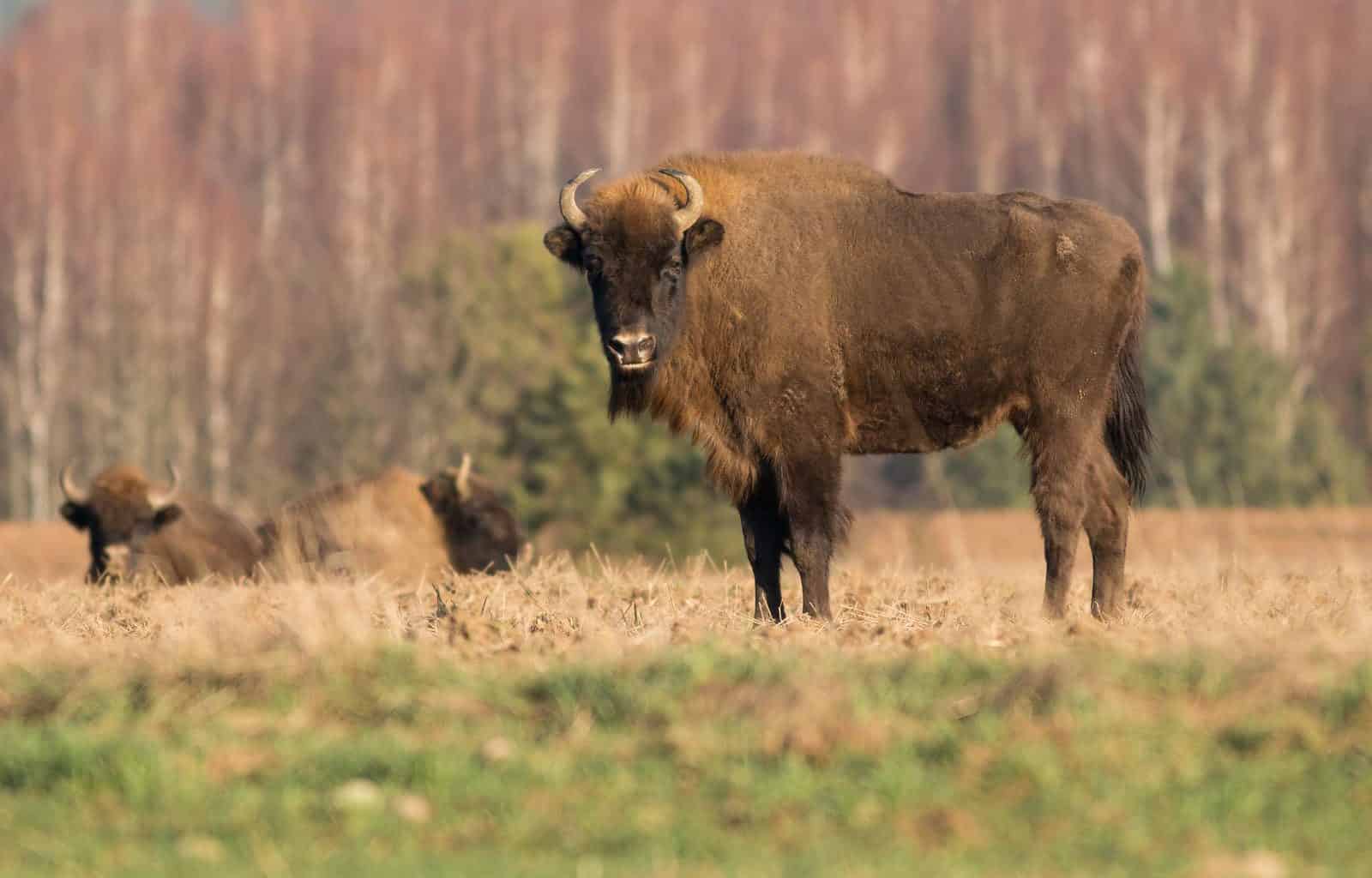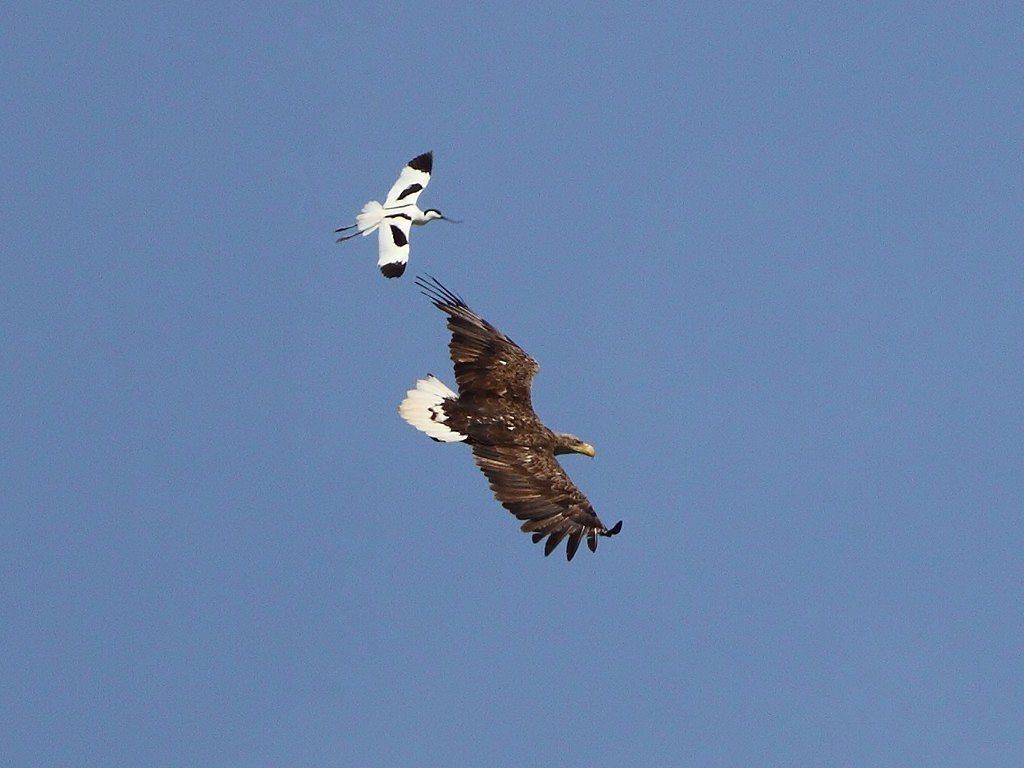Exclusive interview with a European Bison
Congratulations, you are the largest mammal in Europe!
Yes, thank you! I feel honoured to be the largest, but I also have to admit that my family over in America is still a bit bigger. But I guess everything is bigger in America, right? I’m really proud to roam around the European countryside again. It has been a while since my grandparents walked around here, before most of them were killed.
It came this close for you to go extinct?
Most of my family was hunted down during the 20th century, I don’t really understand why. It’s not like we hunt people or kill their dogs, we just eat grass and shrubs. Anyway, in the end there were animals from just over 10 descendants left, mainly in your zoos. And then, people realised they were about to lose us as a species. Those people created a whole programme for us, choosing with who we had to mate. Ridiculous, I rather choose my own partner.
But the genetic selective breeding saved your species.
For now, yes. But many of my family cope with difficulties, because there is so little genetic variation in our genes. It’s like creating a whole new population with your close relatives, nature doesn’t like that.
Yet, your relatives are walking around different European countries again.
People are breeding my relatives in these so-called ‘re-introduction projects’ across Europe. I’ve heard we can be found all the way into the Netherlands nowadays. But most of my family can be found in eastern Europe, especially around the Carpathian Mountains. One of the biggest groups is living in Poland, but they are facing quite a problem there.
The population in the Bialowieza forest you mean?
Yes, this area is one of the last old-growth forests in Europe, home to nearly 1,000 of my family members. It is a beautiful forest from what I’ve heard, and it’s on your World Heritage list. And now, you humans have started to cut down the trees in Bialowieza forest. Have you guys not learnt from the past? You are definitely going to get us extinct if you continue with this. No wonder my nephew left Poland to search for a better place in Germany last September.
That was the first wild bison in 250 years to reach Germany!
And the same one who was killed instantly as soon as he crossed the river Oder. It is such a shame, he was really an explorer. He was always trying to be unique, I think he really wanted to be in your newspaper. Being the first wild bison in Germany would make some headlines, but things took a dramatic turn. Some guy spotted him in the fields near a little town, and all that those people could think of was to shoot him. With the excuse that the bison would be a threat to the local community, he was killed a few hours later. He must have been proud that he made it to your newspapers, but not the way he expected… Did you know that the killing was unlawful?
So, humans should not be afraid of bison?
Are you afraid of the millions of cows in Europe too? Come on, we are a big brown grass-eating mammal, topped with two horns. There is not much to fear if you just leave us alone. A female bison will be a bit more aggressive when her babies are around, but most of the time we are actually quite calm and friendly. We don’t really look for contact with humans, that’s why you find us in the forest most often.
Are you hiding from us then?
I’ve heard you call us a ‘refuge-species’ sometimes. I like to be both in the forest and the open field actually. Sometimes I end up at those delicious farmlands, eating crops and haystacks. But I guess it’s human responsibility to fence their land properly, not mine. And besides that, I love these young little trees in the forests. They are very juicy, you should try it sometime.
Anything else you like to say?
I’ve got to go actually, I see our herd is moving. Our alpha female found a good spot where we can spend the afternoon. She’s a great leader, I have much respect for her. Let me tell you a quick joke about her. You know what she said to her son, when he left our herd in search of another girl?
I’ve got no idea…
Bison!
Curious to read more? Click on the interview with the brown bear, wolverine, wolf, lynx and golden jackal!
Stay up to date on the Wilderness news, subscribe to our Newsletter!








Dear Mr. Perzanowski, let me briefly respond to that, confirming all your facts, as were also described in the interview. As the 5th question confirms, the population in Poland is indeed in Bialowieza forest. Yes, bison normally prefer semi-open forest surroundings. However, in Bialowieza several studies also showed habitat occupation in less open-forest habitats (due to lack of semi-open forest habitats). Whether logging operations impact habitat quality or not, it will impact the bison population’s behaviour due to disturbances and increased human presence if bison share the same area. The bison that was killed in Germany indeed came from a herd in Poland, as stated likewise in the interview. Independent of the original location of the bison, it remains absurd that a bison is killed as soon as it crosses a human-made border, due to different legislation or protection. And the remaining number of bison in captivity could indeed be traced back to just over 10 (i.e. 12) descendants, as was also stated in the interview.
We thank you for your comments and for sharing our story among the wilderness advocates around the world.
Please, at least try to be in accordance with facts. First – the largest wisent population in Poland is not in the Carpathians but at Białowieża, second – logging in the commercial part of Białowieska Forest does not affect wisent habitat because this is not a close canopy dweller but requires open spaces, third – an individual that was immediately shot by Germans (similarly like wolves crossing Oder River few years ago) did not originate from Białowieża but from West-Pomeranian herd. And finally – after eradication of last wild wisents, 54 animals were left in captivity. Though their genotypes could be traced to just 12 ancestors, but the number of animals that took part in restitution program was different.